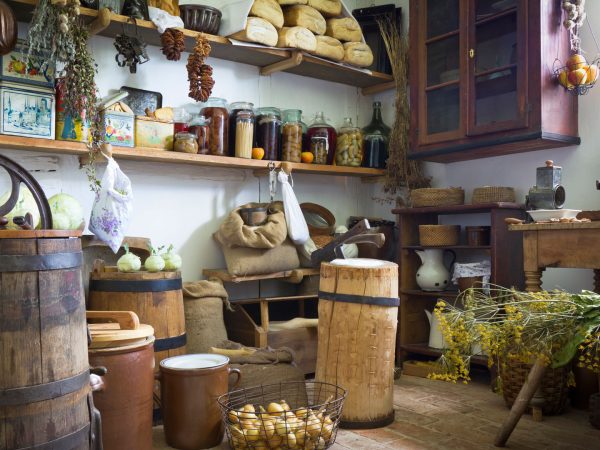Stocking The Pantry

In general, most all of my recipes call for ingredients that are readily available, but occasionally you’ll come across something that has to be bought in a specialty store, such as an Asian, Middle Eastern, or health food market. In those instances I have alerted you and indicated where the item is to be found. But there are certain ingredients that I use frequently which you will want to have on hand when you want to make a healthy recipe from DrWeil.com. So let’s stock the pantry before we begin. |
|||||||||||||||||||||
|
|
||||||||||||||||||||
OilsToasted-sesame oil and olive oil are essential for sautéing and adding flavor and texture to a dish. Grape seed oil and walnut oil are optional but good to have for salad dressings and for sautéing, particularly grape seed because of its high smoke threshold. Note that we always call for toasted-sesame oil, which is the Asian variety but it is readily available these days in supermarkets. Store oils in a cool, dark place and don’t buy more than you can use up in a month or so. |
|||||||||||||||||||||
Asian Products
PastaI have recipes using buckwheat and bean-thread noodles as well as Italian style pasta. Look for the former in Asian grocery stores. Rice & GrainsYou’ll need brown, basmati, jasmine, and (optional) wild rice. Also, quinoa, bulgur wheat, cornmeal, couscous, oat bran, and millet. All these are best bought at a health food store where you can get organic products; buy them in bulk if you have a big household and are going to use them a lot, and store them in tightly sealed jars on the pantry shelf, except during very hot, humid weather when you might want to refrigerate the grains. FlourI use both all-purpose white flour and whole-wheat flour as well as whole-wheat pastry flour. Pastry flour is a high-starch, fine-textured flour that makes delicate pastries and cakes. Nuts & SeedsWalnuts, almonds, pine nuts, sesame seeds, and sunflower seeds are frequently used. Try to get organic nuts and seeds in health food stores and keep them tightly sealed, in the refrigerator or freezer. Herbs & AromaticsSome herbs are so much better when used fresh that it is worth growing your own. But some keep their character and aroma very well when dried, and I would recommend that you have the following dried herbs on hand: Dried basil loses a lot of its character but when combined with seasonings as in a Cajun mixture, it is acceptable. Keep your fresh herbs in tightly sealed jars in a cool, dark place, preferably the refrigerator. Dried herbs do not have to be refrigerated. Replace them when they lose their bloom (your nose is your best guide); if they’ve lost their aroma, throw them out. Seasonings & SpicesAgain, if you cook a lot, you may want to buy the spices you use most frequently in bulk at a health food store. Store in tightly sealed containers in the refrigerator. Italian seasoning: Mexican seasoning: Cajun spice blend: Curry powder: Turmeric: Saffron: Cumin: Chili pepper: Fennel: Cinnamon, ginger, cloves, nutmeg, and allspice: SweetenersWhen you want to sweeten desserts or drinks, sugar isn’t the only way to go. I use honey, maple syrup, crystallized ginger, and natural fruit perserves. Onions & GarlicFresh is always best. I use these aromatics a lot, so be sure to have them in your vegetable bin (no need to refrigerate). Avoid powdered onion and garlic in any form and never buy the peeled and sometimes chopped garlic you find in jars at supermarkets these days. It’s easy to peel a clove of garlic: just smash it with the flat side of a big knife and the skin will split so that it can be pulled off. If you don’t like the smell of garlic on your hands, rub some salt on them to remove it. FruitsAlways try to have lemons, oranges and limes when in season in your refrigerator. I use them a lot in my recipes. It is also useful to have dried fruits on hand, such as mangoes, apricots, figs, currants, and golden raisins, which keep well in tightly sealed plastic bags. |
|||||||||||||||||||||









